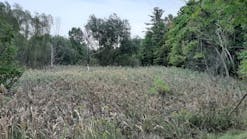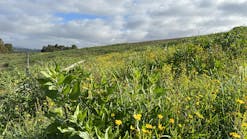Use of GIS, Geo-Based Programs, and Computer Models for Watershed and Site Analyses
There is a wide variety of information sought by water-resource engineers and planners, erosion control professionals, and material specifiers, depending on their objectives and the level of detail required. Therefore, the following discussions will be broad and related to typical watershed studies and will not be specific to the aforementioned professions.
- We will start with the description of a GIS system, what it can do, and examples of how it is used for watershed analysis.
- Next will be a discussion of the development and use of hydrologic models (in conjunction with GIS) to determine the amount, intensity, and timing of rainfall runoff.
- This will be followed by descriptions of hydraulic models that often use the water discharges determined by the hydrologic models. The results of hydraulic models can be used by engineers and erosion control professionals to develop strategies and designs to protect streambanks from erosion.
- The development of sediment transport models will then follow. These transport models can often help identify any existing problems related to river stability and assist in predicting future conditions.
- And finally, watershed erosion models (a very intensive application of GIS) are discussed. Erosion control professionals and those interested in National Pollutant Discharge Elimination System issues are particularly interested in the applications of these models.
Geographic Information Systems
The use of GIS and geo-based information for water resources and watershed analysis is rather new. GIS is a system of computer hardware and software tools that processes raw spatial data and stores the information in a grid system of cells for use in other computer programs. It is used for mapping and analyzing such factors as land use, population, demographics, soil types, and precipitation. GIS integrates common database operations with the visualization and geographic analysis offered by maps. The first step in developing GIS data for use with the hydrologic and hydraulic models is to establish a base map, such as scanned quadrangle (quad) maps, digital ortho-photos, and digital elevation models (DEMs-i.e., digital three-dimensional terrain data). The base map must contain a geographic reference, such as latitude and longitude or a national grid coordinate such as the Universal Transverse Mercator. All of the other GIS data used in the analysis must be in the same coordinate system as the base map.
There are generally five data structures used in GIS:
- points having x and y (generally northerly and southerly) coordinates, such as stream gauges and rainfall gauges;
- directed lines with x and y coordinates, such as streams;
- polygons in the x-y plane that represent homogenous or relatively homogenous areas, such as watersheds, land-use zones, and soil types;
- grids that are geographic layers partitioned into square cells in the x-y plane where each cell stores numeric value with geographic information, such as elevation, water depth, velocity, and sediment concentration (e.g., DEMs are grid data);
- triangulated irregular networks (TINs) that represent surfaces using contiguous nonoverlapping triangles.
Information about watersheds and their associated streams can be compiled in GIS using these data types and the model inputs can be prepared.
ARC/INFO and ArcView GIS, developed by the Environmental Systems Research Institute (ESRI, www.esri.com), are the most commonly used GIS software packages. This article will focus on using this software with the hydrologic and hydraulic models but should not be construed as an endorsement. Other GIS software packages include TNTmips (MicroImages Inc., www.microimages.com) and GRASS (originally developed by the US Army Corps of Engineers (ACE) Construction Engineering Research Laboratory, described at www.baylor.edu/~grass/general.html).
Digital data are becoming more readily available, making the use of GIS more practical. Raster quad maps, digital elevation data, and land-use data can be obtained from the US Geological Survey (http://water.usgs.gov/GIS and http://nsdi.usgs.gov). Soil data and other watershed information can be obtained from the Natural Resources Conservation Service (NRCS, www.ftw.nrcs.usda.gov/nsdi_node.html). Other (often free) sources of GIS data are ESRI (www.esri.com) and the GIS Data Depot (www.gisdatadepot.com).
Geo-based information, in the context of watershed analyses, refers to the digital information processed by a GIS that is representative of a small area, or cells, of the watershed. That area is located geospatially – meaning that it is assigned coordinate points that represent its position in the watershed. For the same small area of a watershed, there may be many different bits of information. For instance, a cell may contain two data types, such as the average surface slope and a number that is associated with a type of ground cover (e.g., 1 = pasture, 2 = woodland). Such information is determined for each cell of the watershed by overlaying maps containing the information and by digitizing it. Sometimes the information can be directly entered into a GIS system by more advanced techniques, such as remote-sensing interfaces. Each type of information is called a layer since the same type of data (but possibly different values of the data) applies to all the cells covering the watershed. Using the GIS tools, one can define relations between layers to create another layer. For instance, you may wish to relate the ground cover (layer one) and soil type (layer two) for each cell to create a new layer that is representative of rainfall runoff potential.
A watershed is defined as an area of land that drains into a stream at a given location. Precipitation in a watershed results in surface runoff as overland flow and stream flow. The overland flow eventually concentrates and becomes stream flow. Because of such hydrologic losses as evaporation, evapotranspiration, interception, and infiltration, the volume of surface runoff is less than the volume of precipitation. The magnitude of the loss is a function of the watershed characteristics, such as vegetation, soil type, slope, and shape.
Hydrologic models simulate precipitation and runoff processes for one or more watersheds connected by a stream network. These models are used to evaluate the impact of urbanization, compute flow at an ungauged location on a stream, determine peak inflow for a steady-state hydraulics model, and develop inflow hydrographs for an unsteady (time-varying) hydraulic model or sediment transport model.
To simulate precipitation runoff, precipitation is first applied to the watershed spatially and over time. The precipitation data can come from data recorded at rain gauges, from hypothetical frequency storms or from radar data. Given the precipitation and characteristics of the watershed, runoff volume is computed by subtracting the losses, such as infiltration into the soil, from the precipitation volume. The runoff volume is then transformed into a direct-runoff hydrograph (stream flow vs. time). The direct runoff from an individual watershed can be combined with runoff from other watersheds or routed through stream and river reaches. The details for computing losses, transforming excess precipitation to hydrographs, and routing these hydrographs through a stream can be found in any hydrology textbook.
There are several commercial models that can be used to simulate precipitation-runoff processes: HEC-HMS (Hydrologic Engineering Center, US ACE), HSPF (USEPA), TR-20 (NRCS), and MIKE 11 and MIKE SHE (DHI Inc.). The HEC-HMS model is discussed in this article. More information on the other models can be obtained from their respective vendors.The Hydrologic Engineering Center’s Hydrologic Modeling System (HEC-HMS) simulates the precipitation-runoff model with a Windows-based graphical user interface. HEC-HMS is the successor to and replacement for HEC’s DOS-based HEC-1 Flood Hydrograph Package. Inputs for the HEC-HMS model include a Basin Model and a Precipitation Model. The Basin Model consists of hydrologic elements, such as watersheds, river-routing reaches and reservoirs, and their associated parameters (such as runoff-loss-rate computation method and runoff transformation method) and connectivity information (connection and direction of flow between sub-basins). In order to build a Basin Model, watersheds and associated streams must be delineated and their various parameters computed.
GIS is a very powerful tool that can be used to generate these inputs. ArcView GIS with Spatial Analyst can be used to delineate watersheds and sub-basins within the watershed and determine flow directions and accumulation from a DEM (see example in Figure 1). In a cooperative effort between ESRI and HEC, an ArcView GIS extension—Geo-HMS—has been developed to use this information and other GIS layers to design an HEC-HMS Basin Model. Land-use and soil-type GIS data can be used to determine some of the parameters for the loss and direct-runoff computations.
David R. Maidment developed another extension, HEC-PrePro, that extracts and prepares hydrologic, topographic, and topologic information from digital spatial data in ArcView and ARC/INFO to HEC-HMS. For further information, visit www.ce.utexas.edu/prof/maidment.
The Watershed Modeling System (WMS), created through the combined efforts of Brigham Young University and the Department of Defense, has been designed to use data commonly stored in GIS to build different computational hydrologic models based on the same physical characteristics. These models include HEC-HMS, HSPF, and TR-20. An extension, WMS-Hydro for ESRI’s ArcView GIS, has been developed to prepare GIS data for use in WMS.
Hydraulic models are used to compute water-surface elevations and associated hydraulic parameters, such as velocity and water depth, for natural streams and manmade channels and their associated overbanks. These models are generally one- or two-dimensional and for steady and unsteady flows. Some of the available hydraulic models include HEC-RAS and UNET (Hydrologic Engineering Center, US ACE); MIKE 11, MIKE 21, and MIKE 3 (DHI Inc.); RMA2 and RMA10 (Resource Management Associates); and FESWMS-2D (Federal Highway Administration). The HEC-RAS model is discussed in this article. More information on the other models can be obtained from their respective vendors.
The current version of the Hydrologic Engineering Center’s River Analysis System (HEC-RAS) performs one-dimensional steady-flow water-surface profile computations for open channels. A new version of HEC-RAS that will be released later this year will include one-dimensional unsteady-flow computations. The steady-flow system is designed for application in floodplain management and flood insurance studies to evaluate floodway encroachments and assess the change in water-surface profiles as a result of channel improvements. The computed velocities can be used to calculate shear stresses for the analysis of channel and bank erosion control measures.
HEC-RAS calculates water-surface profiles for steady gradually varied flow. The model can handle a full network of channels and streams, a dendritic system (whose drainage pattern looks like branches of a tree) or a single river reach. Subcritical, supercritical, and mixed-flow regimes can be modeled. The basic computational procedure is based on the solution of the one-dimensional energy equation. The momentum equation is utilized in situations where the water-surface profile varies rapidly, such as at hydraulic jumps, hydraulic structures, and river junctions. The effects of various structures such as bridges, culverts, and weirs are included in the computations.
The data required to perform the water-surface profile calculations in HEC-RAS include geometric data and steady-flow data. The steady-flow data can be obtained from the rainfall/runoff models described previously. The geometric data consist of the connectivity of the river; cross-section data (ground-surface profiles); reach lengths (distances between cross-sections); energy-loss coefficients (friction, contraction, and expansion losses); stream-junction information (length and tributary angle); and hydraulic structure data (bridges and culverts). HEC-RAS also performs bridge scour computations that can determine the need for scour countermeasures at the structure.
The geometric data, excluding the hydraulic structures, can be obtained from surveys and topographic maps. However, GIS can also be used to generate the geometric data for the HEC-RAS model. An ArcView GIS extension, Geo-RAS, that imports and exports data to and from HEC-RAS, has been developed in a cooperative effort between ESRI and HEC. Terrain data in the form of a TIN are used within ArcView to develop the cross-section geometry (ground-surface profiles). The modeler creates a polyline theme within ArcView that depicts the cross-section locations. Other themes that need to be developed include the stream centerline, polylines representing channel bank stations, and polylines representing the overbank flow paths. Geo-RAS uses the TIN model and these line themes to develop cross-section geometry, stationing, and reach lengths, and then writes the results to an HEC-RAS GIS-file format. HEC-RAS will then read this GIS file and create the geometry data. Once this step is completed, the energy-loss coefficients, hydraulic structures, ineffective flow areas, and levees need to be added to the geometric data.
Once the HEC-RAS model is finalized and the water-surface profiles are computed, the results can be exported back to ArcView using the Geo-RAS extension. The resulting floodplain and water-depth grid can be overlaid on the terrain model and base maps (see example in Figure 2). The modeler may also create a velocity grid; however, this is not part of the Geo-RAS extension.
Sediment transport models are used to predict future channel changes based on long-term scour and deposition. The model identifies locations where significant streambed degradation occurs. Since streambed degradation can cause bank failures, those locations having a high potential for bank failure can be identified and appropriate countermeasures can be designed. Some of the available sediment transport models include HEC-6 (Hydrologic Engineering Center, US ACE), HEC-6T (Mobile Boundary Hydraulics), MIKE 11 (DHI Inc.), and SED2D-WES (Waterways Experiment Station, US ACE). The HEC-6T model is discussed in this article. More information on the other models can be obtained from their respective vendors.
HEC-6T is an enhanced version of HEC-6 written by William A. Thomas, who developed the original HEC-6 code. The inputs for the HEC-6T model include geometric, sediment, and hydrologic data. The geometric data can be imported from the hydraulic model. The hydrologic data can be obtained from the hydrologic model or historical stream-flow hydrographs. The sediment data include deposition and erosion limits for each cross-section, depth of the bed sediment reservoir at each cross-section, a sediment transport method, streambed sediment grain size distributions at one or more cross-sections, and inflowing sediment rating curves and corresponding grain-size distributions.
To date, GIS extensions have not been developed for HEC-6T. GIS data can be used, however, to help develop some of the geometric and sediment data described above. GIS data on land use and soil types can be utilized to develop sediment-yield estimates at various locations in a stream system (see Figure 3). The inflowing sediment rating curve can be produced from the sediment-yield analysis. The scour and deposition results from the HEC-6T model can be used to create GIS grids showing the different magnitudes of scour and deposition along the streams.
General Description of Erosion
Erosion is a complex, natural process that often is accelerated by such human activities as land clearance, agriculture, construction, surface mining, and urbanization. The accelerated erosion rate has both environmental and economic impacts that have resulted in extensive damage and expense. Consequently there is an increased demand for erosion control professionals to design and implement erosion control measures.
Erosion occurs by the action of water, wind, and glacial ice. Only erosion caused by water will be considered here. Water erosion occurs when rain, spring runoff, or floodwaters wear away and transport soil particles. The main types of water erosion are splash erosion, sheet erosion, rill erosion, gully erosion, and channel erosion. Splash erosion occurs when raindrops impact the ground and dislodge soil particles. During sheet erosion, soil materials are removed relatively uniformly by a thin sheet of flowing water. Rill erosion occurs when the runoff creates small channels (rills) small enough to be smoothed by normal agricultural tilling equipment. Gully erosion refers to soil erosion that results in larger channels that cannot be smoothed completely by normal agricultural tilling equipment. These types of erosion processes are categorized as watershed erosion. Channel erosion occurs in watercourse channels and streams and includes both streambed and streambank erosion. This part of the article focuses on channel erosion. The other types of erosion, water quality, and stormwater impacts will be discussed in the second part of the article.
Natural streams have adjusted over time to achieve a stable configuration in response to the volume and velocity of runoff that normally occur in the watershed. However, when the watershed is changed by removing or altering vegetation (e.g., land clearance, agriculture, surface mining) or by increasing the amount of impervious surfaces (urbanization), the stream flows change. These changes generally cause increases in the peak flows during storms, affect the timing of the peaks, and often result in channel-flow-velocity increase. The described hydrologic models are capable of predicting the effects of these changes on the watershed. These changes can cause the stream system to be unstable, and channel erosion (and often deposition) begins. These higher flows tend to erode the streambed and could destroy vegetation along the streambanks. As the streambed scours (lowers), the slope of the streambanks increases, often resulting in bank failure. The loss of vegetation may also cause streambank erosion.
Once a channel erosion problem has been identified, the erosion control professional needs to determine the cause of the erosion and design countermeasures. In order to complete these tasks, several hydrologic and hydraulic parameters need to be determined. These parameters include stream flow, flow velocity, and shear stresses. Long-term scour and deposition trends should also be estimated.
With the widespread availability and sophistication of computers, many analytical tools have been developed to determine the parameters used in erosion studies. These tools include hydrologic models for estimating stream flows; hydraulic models used to compute velocities, water-surface elevations, and other hydraulic parameters; and sediment transport models used to predict future channel changes based on erosion and deposition rates. The design peak stream flows from the rainfall/runoff models are input to the hydraulic models. Proposed channel treatments are simulated for these design discharges to determine the new velocities and shear stresses. The results are then compared to the allowable values of the treatments to see if they are viable. The stream-flow hydrographs from the rainfall/runoff model and the geometry and other hydraulic parameters from hydraulic models are used by the sediment transport models.
With the advancement of GIS technology and the widespread availability of digital data, the development of these models has become more efficient. Furthermore, the results can be exported to a GIS format and projected over the two- or three-dimensional topographic maps and terrain models for further analyses and presentation. Sheet and rill erosion, sediment-yield analyses, water quality, and stormwater impacts will be discussed in a subsequent article.For Part 2 of this article, click here.






